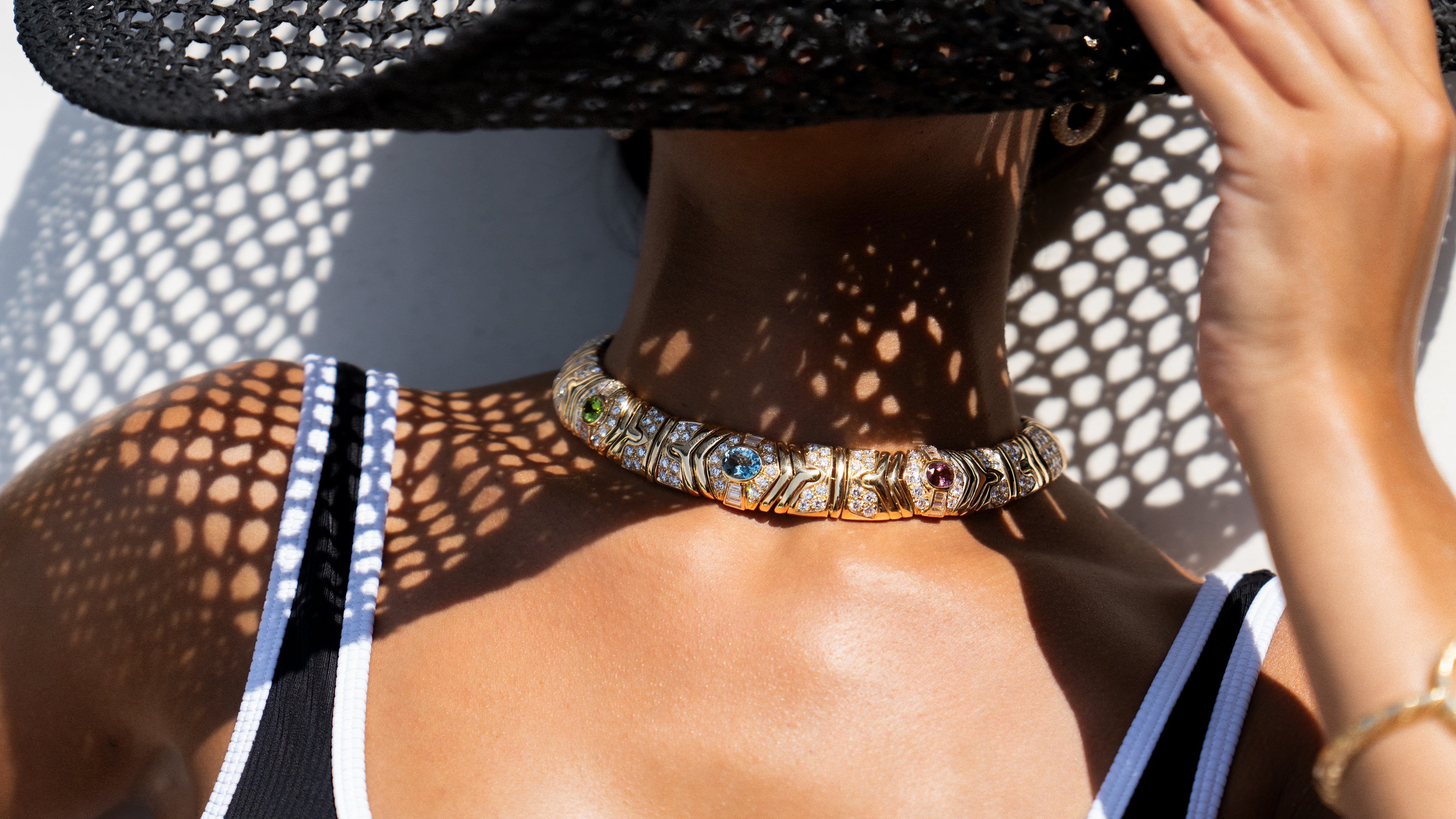Arthur Henry King
Clearly, Arthur King was a true original, creating jewelry that combined organic gemstones with settings carved and sculpted in gold and silver.
Self-Taught Artisan
Arthur Henry King was born in 1921. Little is known of his upbringing, and it wasn't until he suffered an injury during his naval service in World War II that King discovered his calling to create one-of-a-kind jewels.
While he convalesced, King taught himself the lost art of wax casting. Initially, he worked in white scrap metal, then in silver, caging rough gemstones or creating holes in the metal to add texture and depth to the rings and bracelets he designed.
After his discharge from the service, King continued developing his creative talents. In the 1950s, he opened up shop on 4th Street in Greenwich Village, selling handcrafted silver jewelry. He found his niche among a host of avant-garde artists who also settled in the Village and were heavily influenced by the modernist movements.
Expanding His Talents and Exposure
King quickly added other materials to his assortment, crafting in gold as well as silver. His pieces were displayed in flagship stores in Florida, Cuba, and Paris, as well as Fortnum and Mason in London. In 1962, he opened shop at 611 Madison Avenue in a location whose interior featured a wood and cork design. Ultimately, he managed as many as 18 different jewelry shops.
King's freeform style led the way for groundbreaking trends in the 1960s and 1970s. Rebelling against the typical designs produced by other large jewelry houses of the time, King instead created works of art that were as distinctive as his clientele. Arthur King has been put in a class with other such design greats as Salvador Dali, Paloma Picasso, and Georges Braque.
A world traveler who loved visiting exotic places, King was entranced by baroque pearls and unusual gemstones, creating organic jewelry of the finest quality, which he set in gold or platinum featuring ornamental curves and coils. The vine-like and bark-style finishes of his designs are highly desired by those who collect Modernist jewels.
While his favorite gemstone is arguably the baroque pearl, King also used colored gemstones such as amethysts, cabochon emeralds, and topazes. It was his style to allow the material to shape the object. The setting played host to the gemstones it displayed.
The statement pieces he created were bold and eye-catching, matching the gregarious personality of the man who created them. King's signature style was developed by his eclectic range of inspiration. From natural forms to the diverse ephemera he collected: 17th-Century surgical instruments; ancient locks and keys from old monasteries; wooden hands designed to keep vampires at bay; and a mastodon tooth circa 30,000 B.C.
King's quirky charm was legendary. On a trip to London, he was so smitten with the taxicabs, he had to own one himself. He drew much attention from his fellow New Yorkers when he rode through its streets in his authentic London taxicab.
Jewelry for Men
Arthur King was at the forefront of the trend of the late 1960s to create impressive jewelry designs for men. He began designing men's shoe buckles in rough gold, as well as chains with rugged-looking gold links. King produced a men's necklace, showcasing a 40-carat black diamond, which created quite a stir when it debuted in 1968. His bold, masculine designs found favor with such notable personalities as Prince Igor Troubetzkoy and James Biddle, a United States Naval Commodore.
High Profile Clientele
Lena Horne, a passionate King devotee, helped him finance his midtown store at 59th Street. Vidal Sassoon was an outspoken supporter of the brand. A number of celebrities could be seen sporting King's unique designs. A 1963 gossip columnist divulged that Liz Taylor spent much of her salary from the movie Cleopatra purchasing Arthur King jewelry. As well as actresses, high society patrons included Barbara Hutton, Clare Booth Luce, and Mary Hemingway.
Notable Pieces
A white and green jade bangle bracelet with a color that ranged from bright white to bright green with three gold elements featuring an openwork design. The piece was sourced during a trip King made to Asia.
A freeform brooch fashioned in 18 karat yellow gold was home to a trio of turquoise stones. Diamonds totaling a half-carat added touches of sparkle to the impressive piece.
A stunning pendant featured an organic-shaped opal accented with natural rubies and diamonds. The pendant was crafted in 14K yellow gold and featured the intricate design that is the signature style of Arthur King.
Exhibits/Special Recognition
- The Museum of Contemporary Crafts, New York
- The Cultured Pearl Association, Japan
- Victoria and Albert Museum, London
- Goldsmith's Hall International Jewelry Exhibition, London
- Stockholm Museum of Modern Art
